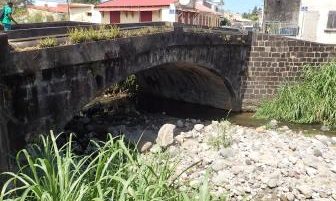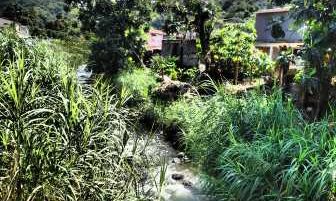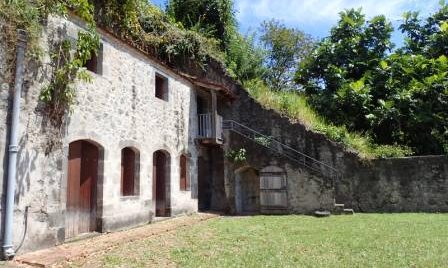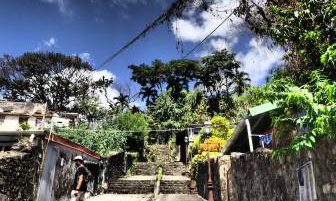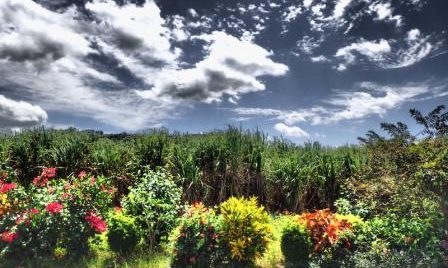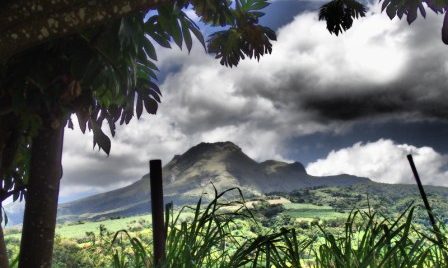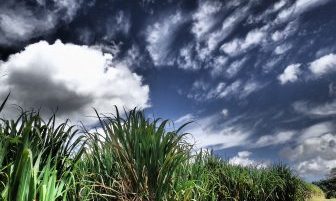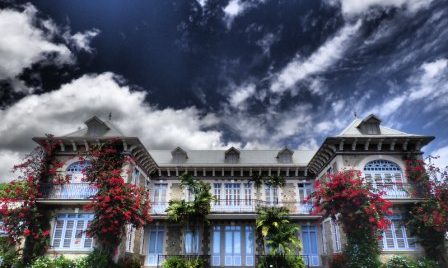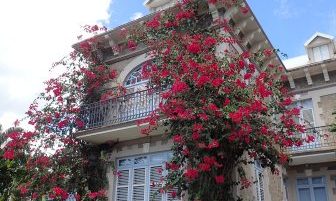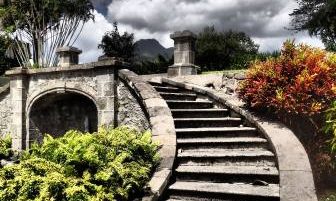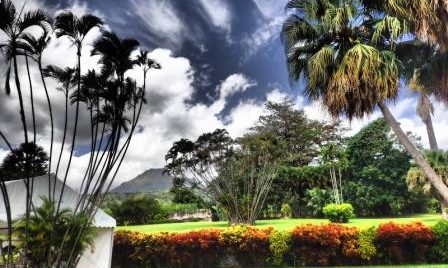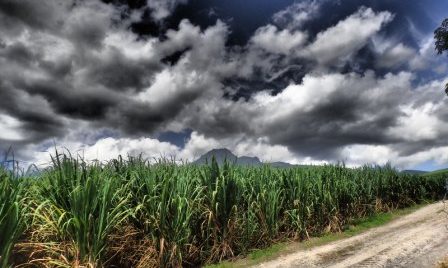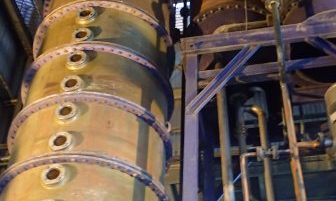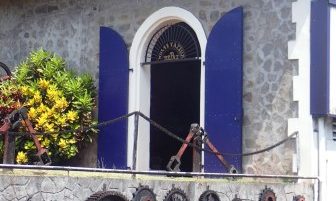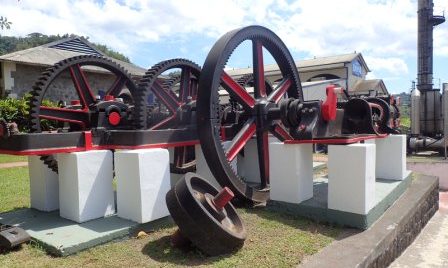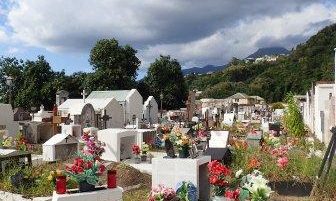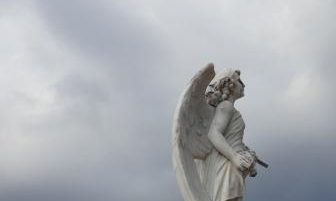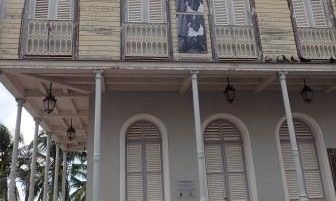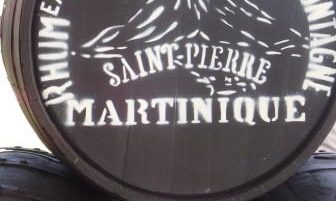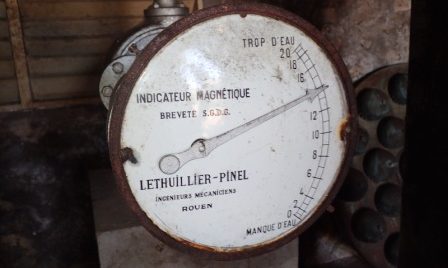St Pierre
We were keen to visit St Pierre further up the west coast so we took the bus early on Friday morning. It took us the best part of an hour to cover the 20 odd miles to our destination. The ride was fantastic though, fabulous views across the sea and charming little villages dotted around the little bays. St Pierre itself is nestled at the foot of the majestic Montagne Pele, the dormant volcano which destroyed the town at the turn of the century. There are a few reminder of the disaster which brought devastation to a very wealthy town. St Pierre used to be the capital of Martinique, complete with all the governmental and commercial buildings, even a 800 seats theatre. Nothing was spared the wrath of the volcano. In a little under 3 minutes, the whole town was destroyed with over 30, 000 souls lost, even the boats at anchor in the bay burst into flames. The little museum at the top of the high street gives a good insight into what St Pierre looked like before, during and after the event. At each street corner we catch a glimpse of the towering sleeping volcano and it does look beautifully benign. We don’t have the time to go and visit the Centre de Decouverte des Sciences de la Terre dedicated to the volcano and its working which is a shame, but we saw all the other places of interest in town which are quite surprisingly numerous given the size of it.
The long walk out to the rum distillery DePaz takes us past part of the town with feels more real, weird to see brand new council places across from much basic and older dwellings. Exotic plants and colourful flowers everywhere, banana trees in each front garden and fields of sugar canes as far as the eye can see. And stunning views of the volcano for each back garden.
That was fantastic. The setting of the distillery, between the montagne Pele and the sea is just breathtaking. The gentle green slope of the volcano gives a frame to the chateau perched above the sea of sugar cane which in turn meet the blue expanse of the Caribbean sea. It is simply stunning. Unfortunately the chateau is not open but we are able to go around it and see the garden at the back with the best view of the mountain. The self guided tour of the distillery is very good, informative and fun. The history of the family and the beginning of the distillery is very interesting. The sugar cane harvest is just starting s the distillery is a hive of activity, we are able to see the crushing of the canes and the whole process in action. We stopped at the little cafe for coconut cakes underneath the huge fig tree. Extremely pleasant spot. The little shop offers free tasting and caught up in the whole experience, we leave the distillery clutching a bottle of DePaz rum.
I dragged Ian to the cemetery behind the cathedral, dramatic place with all the tombs tiled white on a background of black aged concrete, the only splashes of colour provided by the bunches of artificial flowers scattered on the graves. The most of the burial places are family tombs strewn with pictures in black and white. As we were leaving the cemetery, a funeral cortege was making its slow ascend to the gates. A huge crowd of people dressed in black and white were following the hearse singing hymns. Quite a spectacle in the late afternoon sun.
Waiting for the bus by the beach we were disturbed and saddened to see a sailing boat had dragged its anchor and had been washed ashore on the sand. It looked like it had happened very recently and there was no one around. A very distressing sight indeed.
The return journey to Fort de France was fun, two mothers and a total of 6 kids, ranging from a few months to 10 years of age, piled into the minivan and made the journey very entertaining with their constant chatter.
Glad we visited St Pierre, we had a great day out. Shame we did not have the time to go up the Mont Pele, it would have been a great day for it as for once the summit was not shrouded in its layers of clouds. Guess we will have to come back.
